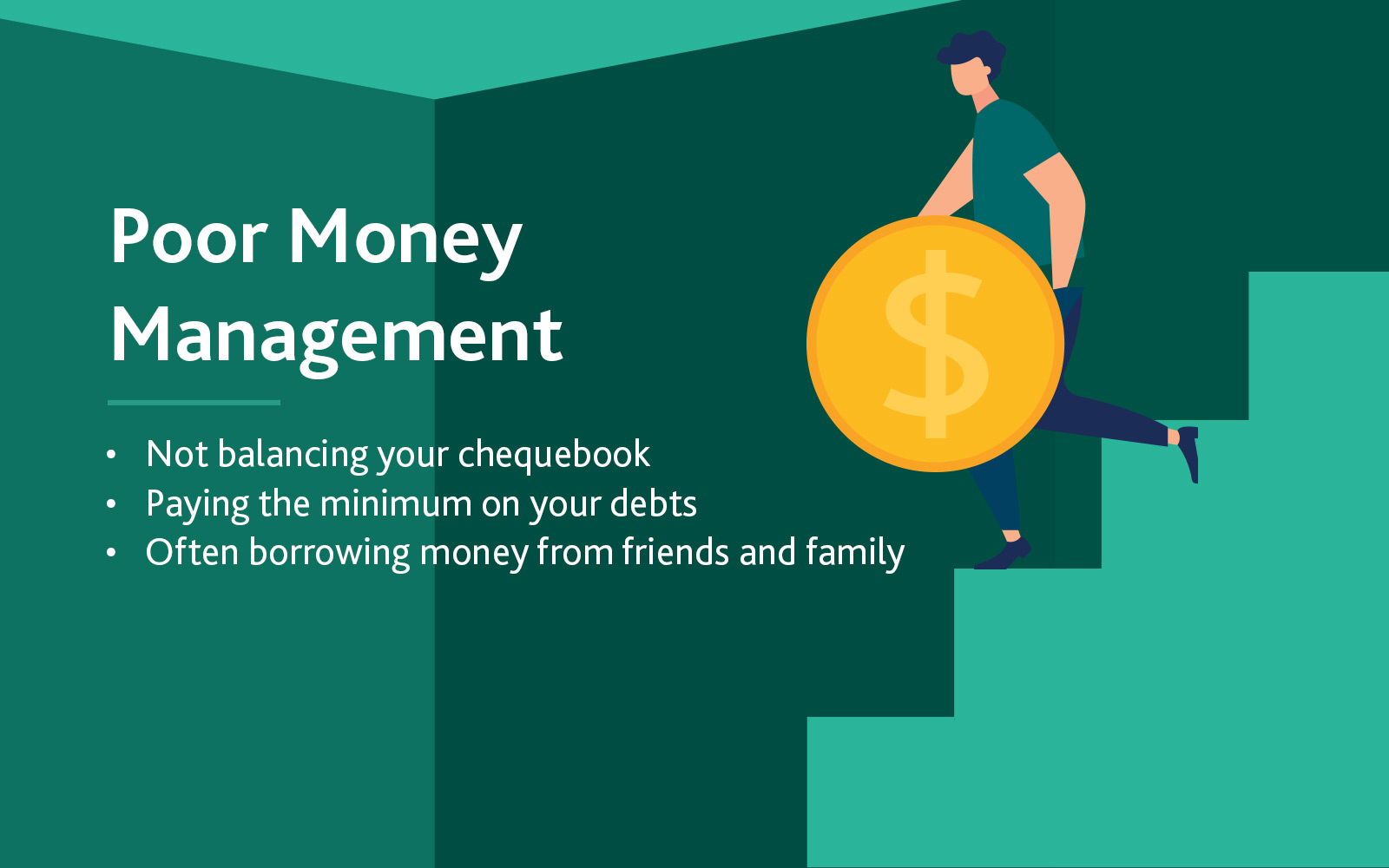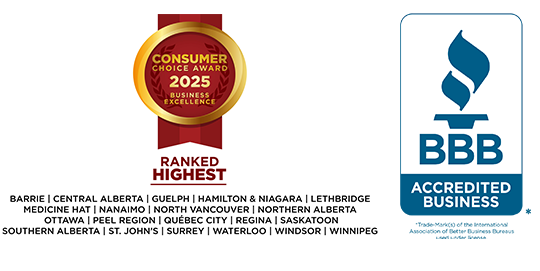If you like DIY solutions, we have a few for you to consider when you are trying to pay down your debts. Whether you are looking for a long-term solution, a short-term fix or a combination of these we have outlined the options below. Which solution or solutions feel most suitable for your unique situation?
Long-term debt-management solutions:
- Budgeting
- Paying more than minimum
- Consolidation loan
- Home equity loan
- Payday loans
- Cash advances
- Informal debt settlement
- Borrowing funds from friends or family
- Cashing in RRSPs
Setting a budget
Budgeting for fixed and variable living expenses is imperative to the success of all the debt solutions listed below. Whether you are saving for a special purchase, trying to pay down debt, or just keeping up with the living expenses and minimum payments, a budget is the foundation for building good financial habits. Aren’t sure how to set a budget? Try MNP’s Budget Tracker Spreadsheet.
When it works
Budgeting alone may be enough to get you out of debt, depending on the extent of your debt, and the availability of surplus funds in your monthly budget to allocate towards debt repayment.
Example: Set a goal for repaying your debt. A simple example would be to budget for a monthly payment of $100 to pay off $1000 over 10 months.
By listing your fixed and variable expenses each month you can determine how much money you have left, after paying expenses, to put towards debt repayment. In the example listed above, if your budget only leaves you with $50 left at the end of each month, you won’t be able to reach your goal of paying off the loan in 10 months; however, you could pay it off in 20 months at that payment arrangement. Setting a clear budget helps you achieve your financial goals.
By identifying wants versus needs you may identify any sticky habits or trends you want to address or change to reduce spending and tweak your budget. This will help you achieve your goal of paying the debt off in 10 months more attainable.
When it doesn’t work
While never too late to start budgeting, sometimes depending on a strong budget simply isn’t enough on its own to solve significant debt challenges. Often, it will be a combination of budgeting and other debt repayment solutions that will achieve the desired result. If there isn’t money coming into the household to cover the fixed expenses and living costs, then a strong budget won’t be enough to get an individual out of debt in a realistic amount of time.
Paying more than your minimum monthly payments
If you can increase your monthly payments on one or more of your debts, you will see the overall principal balance reduce every month and pay down your debt faster.
When it works
How fast you pay the debt down depends on how much you pay each month combined with reduced use of the available credit.
If you have more than one debt you must maintain minimum payments on all your other debts while you focus on increasing monthly payments to one of your debts until it is paid in full. You can then take the same approach with your next piece of debt.
This is called the Snowball Method of debt repayment. Start by arranging your debts from lowest balance to highest. It feels better to rid yourself of your smallest debt and the idea is that the snowball effect builds enough momentum that you'll be more inclined to stick with the strategy
When it doesn’t work
If you have only been making the minimum payment, you won’t see your principal balance drop. If you increase your payments but also use the available credit each month so you are maxing out the credit you won’t see an improvement in your outstanding balance due.
If your budget is already stretched and you can’t increase your minimum payments, then this method won’t work for you.
If you can’t continue to make the minimum payments on all your debts, while increasing the payment on one of the debts, this method won’t work for you.
You must maintain minimum monthly payments on all debts and increase the payments on at least one of the debts to see a reduction in total outstanding debt.
If you are paying down your debts but are not maintaining your monthly costs of living (groceries, housing, utilities) your financial situation may actually worsen. It’s critical that you are able to manage the monthly living costs along with the debt repayment to achieve success.
Taking out a consolidation loan
A debt consolidation loan is when a bank or other financial institution lends you the funds to pay out your other debts in full, and you are left with one loan payment. Interest rates are often lower than you are currently paying on your other debts.
When it works
If you have been juggling multiple payments and are struggling to budget each month, consolidating your multiple debts into one loan with one payment may be a good solution for you.
To be eligible for a consolidation loan you will have to meet the lenders’ criteria for borrowing. If you have a low credit rating, or a high debt-to-income ratio, you may need a co-signor, or collateral. If you have a decent credit score and / or someone to co-sign for you, this may be a good option to help you get out of debt.
When it doesn’t work
Your bank or other financial institution may offer you a loan to pay out your other debts, but if you can not afford the monthly payment (see budget section above) then taking this consolidation loan won’t be the long-term solution you are looking for. If your monthly loan payment is more than you can manage then you will miss payments, resulting in further harm to your credit rating, and additional fees and interest charges.
Exploring a second mortgage or home equity loan
A second mortgage is a second loan you take on your home. You can borrow up to 80% of the appraised value of the home, minus the balance on your first mortgage. Interest rates on second mortgages are often higher than the rate on first mortgages, but still lower than average credit card or unsecured loan rates.
When it works
If the new payment on the second mortgage or equity loan is lower than the payments you are currently making on your unsecured debts, this option may be right for you. By using the funds from the new loan to pay out your existing unsecured debts, thereby decreasing the number of payments into one manageable, and often less costly, monthly payment than unsecured credit cards and loans.
Home equity or mortgage loans are often lower interest rate than other forms of credit, like credit cards and finance loans. The amortization period of a mortgage or home equity loan may be longer than a credit card or finance loan, which allows the payment to be more manageable.
If you can manage the first and second mortgage payments within your budget this may be the best DIY solution for you.
When it doesn’t
Mortgages and home equity loans are ‘secured against your home’. If you default in repayment of the loans, you are at risk of losing your home. You must maintain payments on your first mortgage, in addition to making the payments on the second mortgage.
There can be additional costs associated with mortgages and equity loans, including land registry fees, appraisals, and legal fees.
Payday loans
Payday loans are short-term loans that are meant to cover cash shortfall until your next payday.
When it works
The cost of this type of borrowing is very high, and you can only borrow up to $1,500. If you have a temporary shortage of cash, but you confident you will be able to pay the loan back on time, and cover your regular expenses, then this ‘temporary fix’ may be a suitable solution for you.
When it doesn’t work
Using payday loans for ongoing costs (rent, utilities, groceries) could lead to further financial trouble and what is commonly known as the ‘payday loan cycle’ or ‘debt trap.’ This is when every payday you repay the loan and have to take out another payday loan to once again carry you to the next payday. Once you are stuck in the debt trap it is hard to get out. When you can’t pay back the payday loan on time you are at risk of collection action, property seizure and wage garnishees.
Taking out a cash advance on your credit card
When you take a cash advance on your credit card the interest is charged right away. The interest accumulates daily until the advance is paid back in full. The interest rate on cash advances is often higher than the rate on regular purchases with your card but can be lower than interest rates on payday loans. There may also be additional charges for cash advance transactions.
When it works
Using a cash advance to make a payment on your debt may make sense if the fees, charges and rate of interest on the cash advance are lower than the late payment fees or penalties, you would incur if you missed a payment on your other debt. However, you should not use this method on a regular basis, it should be used cautiously as a temporary fix while you are putting a longer-term plan in place.
When it doesn’t work
There is no interest-free grace period for cash advances. That means if you take cash advance on your credit card you are charged interest immediately. Even if you pay the cash advance back before the next monthly bill you are still paying interest on the advance. This type of ‘quick fix’ is not recommended if you can’t pay it back within 30 days, or by your next payday.
An informal debt settlement
An informal debt settlement is a voluntary arrangement negotiated between you and your creditors.
When it works
Credit limits, repayment terms and interest can all be negotiated. You will have to call each of your creditors directly to negotiate a repayment plan that works with your budget and meets each creditors’ repayment timelines.
If the newly negotiated terms work within your budget this can be a successful DIY solution. Keep in mind that the more creditors you have, the more challenging it can be to agree upon and manage each of these agreements.
When it doesn’t work
Your creditors are not obligated to work with you to renegotiate existing terms. Even if you successfully negotiate new terms, they could cancel the new agreement without notice if the agreement it is not properly documented in a binding legal document.
It may seem like the new repayment terms are more manageable, but if you haven’t properly budgeted for the payment, you may struggle to keep up your end of the agreement.
Borrowing funds from friends or family
If you are struggling to pay down your debts or obtain alternative financing, you may have a friend or family member willing and able to help you with a personal loan.
When it works
A personal loan from family or friends may be interest free with no fixed terms of repayment, making it a very flexible and desirable option for paying down debt. Some family members and friends may even be comfortable gifting you the money, rather than expecting repayment.
Saving on interest and relieving the stress or repayment deadlines may entice you to consider this type of DIY solution.
A successful loan arrangement may look different for each person, but in general it is recommended that the terms of the loan and repayment be in writing and signed by both parties. Set a budget for a payment schedule over a reasonable period of time. Pay your lender as if they are a financial institution; not like they are your friend or family member. By treating this loan like any other your friend or family member will appreciate this, and it can keep the relationship from being permanently harmed. Nobody wants to be ‘that friend’ that doesn’t repay their debts.
When it doesn’t work
If you are unable to repay the loan within a reasonable period of time, or ever, your relationship may experience irreparable damage. Your friend / family member may become very upset and feel betrayed or taken advantage of if you don’t hold up your end of the deal.
Furthermore, if you don’t put the loan terms on paper, and properly document it, your friend or family member may not be able to enforce collection if circumstances change. If you file bankruptcy or a proposal at a later date, your friend or family member will need to prove that you owe them money, and that the funds weren’t a ‘gift.’ They may not be able to participate like other traditional lenders if you file bankruptcy or a proposal.
If you are trying to rebuild your credit this type of loan won’t help. Most friends and family won’t know how, or care, about reporting positive repayment of this loan, to a credit bureau, and future lenders may not recognize this as a form of credit and therefore may not help you build your credit rating / report.
Redeeming RRSPs
If you have been contributing to RRSPs or other long-term investments, you may have been allocating funds to future savings that you needed for current expenses. Using credit to pay for living expenses, while investing in long term investments may be costing you even more because the interest you pay on your various forms of credit is higher than the return on most investments.
When it works
A temporary solution is to stop monthly contributions to RRSPs while you rework your budget and pay down your debts.
If simply reducing or stopping contributions isn’t enough to help you pay down your debts, then you may choose to redeem investments and use the net proceeds to pay down your debts.
You can always go back to making regular contributions to your investments when you’ve paid your debt down to manageable amount.
When it doesn’t work
There will be tax consequences of redeeming registered investments. You won’t et the full value of the investment back, there will be tax held at source, and you may end up owing more tax at the end of the year too. You are also losing the benefit of compounding interest on your investments if you cash them in early.
The net proceeds, after tax, of redeeming your investments should provide you relief from your debt burden enough that you can manage your future debt repayment and not go further into debt. If you still struggle with debt repayment, even after redeeming RRSPs, you may need to file a Bankruptcy or Consumer Proposal. If you file a Bankruptcy or Consumer Proposal Any contributions made more than 12 months prior to filing Bankruptcy are protected from creditors. Therefore, if you are going to file for a Bankruptcy or Consumer Proposal, it doesn't make sense to redeem these protected assets.
In conclusion
There is no on-size-fits-all approach to managing and working through debt. Your goals, financial and family circumstances are unique, and all deserve consideration in determining your best path forward. MNP’s Debt Calculator takes numerous factors into account — including your province of residence, income, assets, and debts — in order to give you true debt expertise and a clear path forward towards your quickest, most financially viable options for becoming debt free.
Practicing healthy financial habits can help prevent you from taking on too much debt, and can help you reduce your debt, but sometimes you need a little extra help if your debt is not manageable. One of the most popular and effective ways to deal with credit card bills, medical bills, and other unsecured debt is to reach out to a Licensed Insolvency Trustee (LIT). This in no way binds you to a legal bankruptcy or proposal, the LIT will advise you of all of the options available to you, including informal, DIY and formal proceeding, and make expert recommendations that could include a combination of the options discussed.
Reach out to speak with an MNP LIT today and learn how you can get your financial fresh start to becoming debt-free forever.



